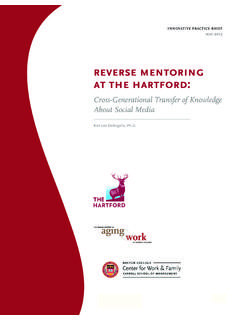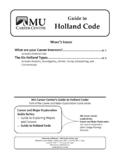Transcription of The future of insurance in a digital world - EY
1 The future of insurance in a digital world The future of insurance in a digital world The future of insurance in a digital world Executive summary The digital revolution has transformed the way companies interact with customers, creating an environment where marketing, information and technology must work together. Retailers and industry giants have made significant strides in adopting digital platforms to deliver a satisfying customer experience. As mobile and social networks increase in popularity, consumers are relying on smartphones and tablets to research, compare prices and buy products online anytime, anywhere.
2 As noted in our EY Global insurance digital Survey, the insurance industry is lagging behind other providers in developing innovative and customer-friendly digital experiences. Insurers trail the entire digital spectrum: customer engagement, use of analytics, and adoption of mobile and social media. While they have high ambitions of digital leadership, many are far from bullish about their digital maturity. Life insurers are less advanced because of organizational silos, multiple distribution channels and legacy technology that impacts the speed at which new strategies are adopted.
3 Yet, customers expect the same intuitive and streamlined experience from their insurance carriers as they do from their favorite app, search engine or online retailer. Life insurers must adjust their business models and strategies to remain competitive and take advantage of potential wallet share. Failing to adapt to the fast pace of digital change presents many risks, including losing ground to more agile players. This paper explores what is happening in the digital landscape, the influence of demographics and information overload, and the case for change within the context of the value chain.
4 Given the prevalence of digital adoption in other industries, insurance companies cannot risk sitting on the sidelines. They can start by asking these key questions: What should life insurers consider as they develop a bold vision for their digital strategy? How do they meet the diverse needs of end-to-end customers, financial advisors and wholesalers? How can they deepen customer relationships by learning from the experiences of retailers and technology providers? The future of insurance in a digital world 1 The future of insurance in a digital world 1 New technology equals information overload The future of insurance in a digital world More and more people of all ages and demographics are living their lives vis- -vis the internet.
5 The younger generation (particularly, the millennials) is using social media to share structured and unstructured data across multiple means and channels in an integrated fashion. This is creating a greater need for digital relevance. The model has shifted from face-to-face to computer, phone and now mobile devices. And the launch of new mobile payment options is making traditional wallets obsolete; eMarketer research indicates that mobile payments will grow to $ billion in 2016. Customers expect all these experiences to be integrated and consistent.
6 The increased availability of, and access to, data is what will bring insurance to life in the digital world . Today, the stakes are higher than they have ever been. Before the digital era (dot-com), companies would release information about capabilities and layer it with transactional pieces. In those early years, the process was informational and later became conversational (where you could briefly ask questions to guide you along, with some, albeit minimal, transactional activity). Nowadays, with the advent of the digital revolution, products and services are being introduced so much faster.
7 The adoption rate of new technology is so much quicker that consumers have higher expectations in terms of insurance companies digital output and functionality. Moreover, cycles and timelines have been condensed. Consider the fact that online social networking services amassed 50 million users within 18 months; notably, it took one retail giant 5 to 7 years, and an auto manufacturer 20 years, to reach that milestone. The rates of change and adoption are much steeper than ever before. Insurers have to build compelling capabilities via digital models in order to be relevant in the marketplace.
8 New technology equals information overload 3 The future of insurance in a digital world 2 Customer experience matters the most The future of insurance in a digital world Generation X, millennials and the younger end of the baby boom generation are all increasing their usage of and familiarity with technology, as the rate of adoption skyrockets. That rate of usage has created a much more prevalent user base via global technology (phone or tablet), as well as traditional web interface. Insurers need to be relevant when it comes to those interfaces be it through business-to-business or direct-to-consumer activities.
9 Insurers must provide a comprehensive experience. It is no longer feasible to default to the dot-com-era model of the informational, conversational and transactional experience. Insurers also need to provide robust transactional capabilities that are consistent across all channels. This means picking up on one channel and handing off to another to complete the transaction. A customer should be able to start the conversation with a financial advisor, purchase a product on the phone and complete that transaction by computer.
10 An experience across channels is the digitalization of the activity. Customers view this through different personas and different players, but they all have a common need for transactional and financial information, supported by advanced metrics and data. Advanced analytics and key performance indicators will define the insurance market leaders of tomorrow, based on key findings from the EY Global Consumer insurance Survey. Identifying and implementing the right customer metrics will require process design, data management and strong analytics platforms that align to key functional drivers and business strategies.
















